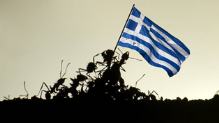Lasius meridionalis
From Collingwood (1979) [1]
This species is characteristic of lowland sandy heath in North Europe. Nests arc in the ground, often with low earth mounds and carton lined chambers. Flight period August. Fertilised queens start colonies through adoption by L. alienus. Males which have well toothed mandibles have been seen to pick up objects and to feed themselves.
References
- , The Formicidae (Hymenoptera) of Fennoscandia and Denmark, vol. 8. Klampenborg, Denmark: Scandinavian Science Press Ltd., 1979, p. 156.
From Collingwood (1979) [1]
Worker: Clear yellow; pubescence on head rather dilute but close and very fine on gaster. Funiculus segments distinctly longer than wide; scapes and tibiae elliptical in cross section with thin front edge. Petiole sides straight to weakly convex, dorsal margin flat to slightly emarginate. Body and appendage hairs numerous. Length: 3.5-5 mm.
Queen. Dark brownish black; general apparance shining with fine shallow microsculpture. Body pubescence dilute but close and very fine on gaster. Funiculus segments longer than wide; scapes and tibiae flattened with thin front edge. Scale straight sided, dorsal margin flat, occasionally weakly emarginate. Body and appendage hairs abundant. Head width 1.7-1.8 mm. Length: 7.0-8.0 mm.
Male. Black; clypeus and frons distinctly shining with weak microsculpture. Pubescence sparse except on gaster where it is very fine and close. Frontal triangle, frontal furrow and mandibular teeth very distinct. Head at least as broad as alitrunk. Eyes with erect hairs, appendage and body hairs numerous. Cross vein m-cu often ab-sent on fore-wings. Length: 4.0-4.5 mm.
References
- , The Formicidae (Hymenoptera) of Fennoscandia and Denmark, vol. 8. Klampenborg, Denmark: Scandinavian Science Press Ltd., 1979, p. 156.
